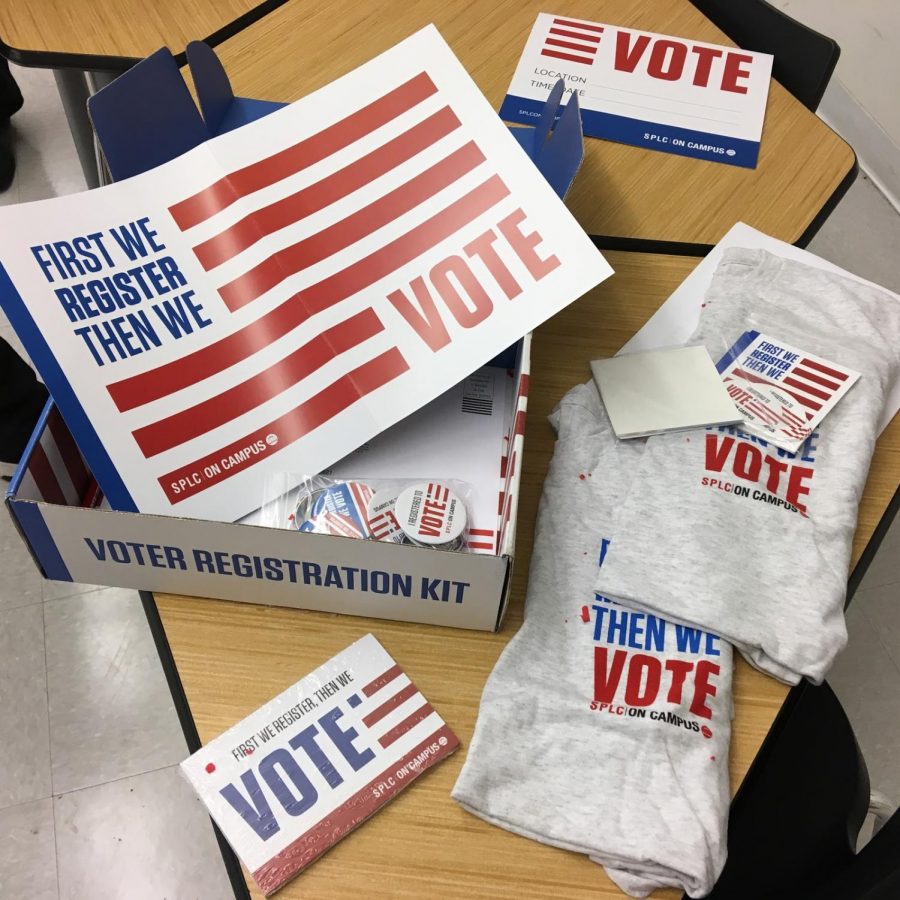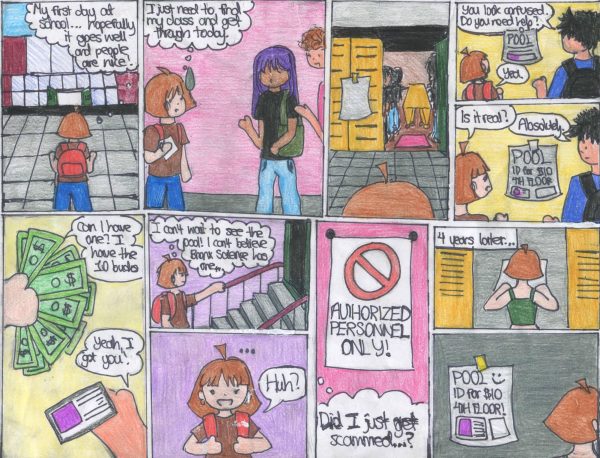Red or Blue: The Lasting Implications of the Midterm Elections on November 6th, 2018
As November 6th, 2018 rolls around, voting registration kits serve as a way to combat voter suppression by providing resources and information about the election process.
With many Congressional seats up for replacement, the upcoming midterm elections serve as a critical test for the Republican Party ever since President Donald Trump’s inauguration. Since the American Civil War, Americans have typically voted for the president’s opposing political party for Congressional positions, with the president’s party losing an average of thirty-four seats in Congress (Brookings Institution). This usually occurs when the president fails to fulfill all campaign promises, and opposing voters strive to shatter the status quo. Although it seems likely that the Republicans will lose seats during this year’s midterm elections, they have an advantage that might help them maintain their majority in Congress.
As regulated by law, members of the Senate serve six-year terms and the House of Representatives serve two-year terms, with elections for all Senate and some House members taking place every two years. This year’s midterm elections will include thirty-six state governors, all 435 seats in the House, and thirty-five of the 100 seats in the Senate, twenty-four of which are Democrat and the remaining nine being Republican.
“In North Dakota, it’s Native Americans. In Georgia, it’s African Americans. You have to be blind to ignore the bipartisan nature of suppression efforts.”
With a vast number of Democrats stepping down on November 6th, 2018, analysts have speculated the difficulties in achieving a Democratic majority in the Senate (The New York Times). The events that have played out in the last few years makes this task highly unlikely, but still possible. For instance, Trump’s favorability and approval ratings have been on the decline in nearly all polls in the past month. Former president George W. Bush’s approval rating of 38%, similar to Trump’s current 36%, correlated with a loss of thirty Republican seats in the House in the 2006 midterm elections (Gallup). Many Democratic candidates, such as Phil Bredesen of Tennessee and Beto O’Rourke of Texas, have a competitive standing in traditionally Republican states. Combined with the fact that thirty Republicans have chosen not to run for re-election, obtaining a Democratic majority may be more achievable than perceived to be.
The chances of a Democratic majority in the House are more probable, especially when considering patterns in previous midterm elections. Although fewer Americans typically vote in midterm elections compared to presidential elections, analysts have predicted a high voter turnout based on primary votes and increased interest in the election, especially those of Democratic preference (NBC).
“Democrats are likely to have a boost from Taylor Swift’s acceptance speech at the American Music Awards, where she endorsed the two Democratic candidates in her home state,” Zoe Wong ’19 said. “Although her words were directed towards the residents of Tennessee, the support of an influential figure like her is not going to be forgotten as easily.”
However, concerns of voter suppression in this year’s upcoming election are more pervasive than ever before. In the hopes of gaining a party advantage in Congress, there have been attempts to reduce voter turnout, such as restricting hours and locations of DMV stations or making it more difficult to obtain a free state ID.
“In North Dakota, it’s Native Americans. In Georgia, it’s African-Americans,” Mr. Davis, a Bronx Science social studies teacher, said. “You have to be blind to ignore the bipartisan nature of suppression efforts.”
Implications of this year’s midterm results may last far longer than two years. “This year’s midterm elections are definitely important for both parties,” Xander Plossi ’20 said. “It’s the foundation for which a vast number of critical matters will debated upon.”
With Brett Kavanaugh’s election as a right-leaning justice on the Supreme Court, Democrats face an uphill battle to make their voices heard. Should the Republicans maintain their majority in both the House and Senate, it would be much easier for President Trump to fulfill his agenda of repealing Obamacare, cutting taxes, and restricting immigration, among other policies. The trade war with China may intensify under his presidency in the next few years, potentially harming the U.S. economy in the long run, and many refugees and immigrants will continue to be restricted by his policies.
The economy will not be the only policy affected, especially considering the impact that lawmakers can have while in office. This year’s elected state and local legislatures will be redrawing congressional districts in 2020, a process that occurs every ten years following the collection of census data. Keeping their political interests in mind, lawmakers may redraw their districts in a manner that gives their party an advantage, a practice known as gerrymandering. It won’t be until 2030 that the next redistricting process will occur, suggesting that the implications of the legislatures elected and, subsequently, the redrawing of districts in 2020, may last longer than even Trump’s presidency.
As November 6th, 2018 draws close, it is important to keep in mind that it is the voice of Americans and their votes that determines what happens. If you are 18 years or older and a U.S. citizen on Election Day, make sure to register and cast your vote from 6 A.M. to 9 P.M. on November 6th, 2018!
Annie Liu is a Staff Reporter for ‘The Science Survey’ and the Copy Chief Editor for ‘The Observatory.’ She enjoys journalistic writing for the...











